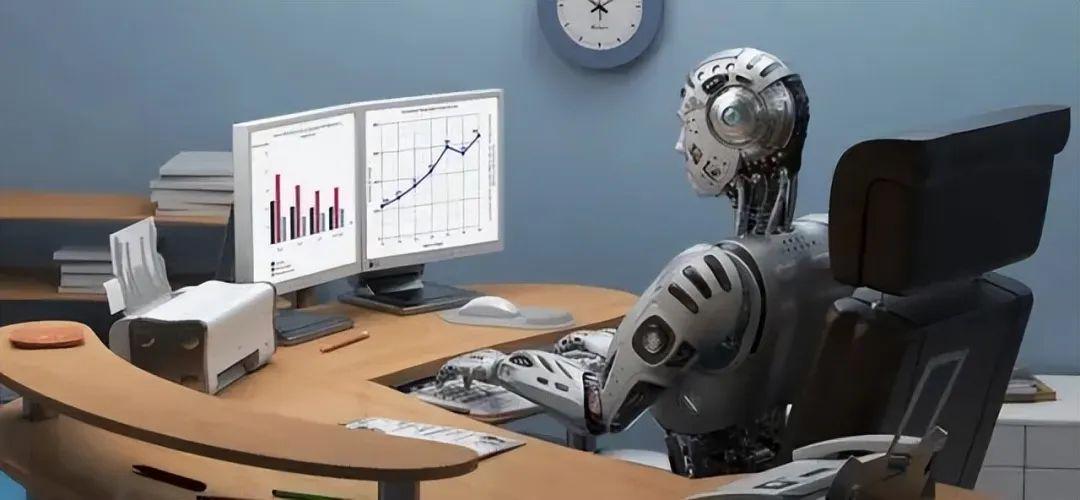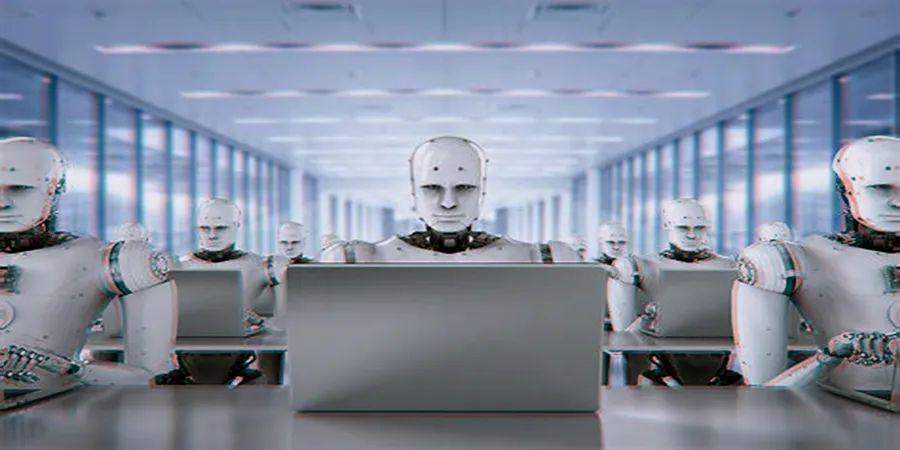The wave of digital transformation is coming, and the "digital employee" market is accelerating. All walks of life are beginning to explore the application scenarios of digital employees. What exactly are digital employees, and what advantages do they have that are favored by enterprises?
"Out in public" and "behind-the-scenes heroes"
Digital employee is a figurative name. The so-called "digital employee" is actually a virtualized and digital labor force (Digital Labor) , which is mainly realized by a series of technologies such as AI (artificial intelligence) and RPA (robotic process automation). .
Digital employees are not innovative inventions that can be achieved overnight. From the Ford Motor Automated Production Line in 1913, to the patented industrial robot applied by DeVore in the United States in 1954, to the software robots that emerged at the beginning of the information revolution in the 1970s, they are all digital employees. Early prototypes.
Common digital employees are mainly divided into two categories, one is the virtual digital human who " shows his face" , and the other is the "behind-the-scenes hero" RPA+AI digital workforce.
The so-called "showing face" digital employees are mainly based on the virtual digital human technology of the "Metaverse" concept. They have real-life facial expressions, body movements, and exclusive images. From 2D cartoons to 3D hyper-realism, with the help of holographic projection technology, they can make people "see" and "hear", interact with people, and undertake the business of enterprises facing customers.
Such digital employees often appear in fields such as e-commerce and media. For example, "Liu Yexi", a virtual beauty expert on Douyin; "AYAYI", the digital manager of Alibaba's Tmall Super Brand Day; Internet celebrity Olympic public welfare ambassador "Love REAI" and so on.

Above: Liu Yexi, AYAYI
Next: Dongdong, love REAI
The “heroes behind the scenes” category of digital employees are digital workforces such as “Zhou Meiyi” and “Ai Wan” based on RPA+AI technology.
They are usually "hidden" in the computer, by simulating the habit of operating the computer (mouse click, keyboard input, etc.) , calling the program in the computer (including Excel, Word, etc., browser pages, OA system, enterprise management system, etc.) , Realize data cross-platform/cross-system migration.
Tasks that required manual operations in the past (such as program login, information search, data extraction, report statistics, bill management, etc.) can now be automatically handled by RPA+AI digital employees, while ensuring 7×24 hours of ultra-high work efficiency , which is one of the reasons why digital employees are widely used.

Behind-the-scenes hero "RPA+AI"
With the rise of business process automation (BPA) in the 1990s, how to combine business processes and automation technology has become a hot spot in the management field and IT circles, especially the entry of technology giants such as IBM and Oracle to bring business process management to a new level. Floors, and RPA has also begun to emerge and gradually become the best practice of BPA.
Early RPA technology can be traced back to tools such as screen capture and Macro. In the early 21st century, companies mainly engaged in RPA software products appeared abroad.
In China, RPA started relatively late. Its software application can be traced back to the button wizard in 2001, which has evolved from the automated operation of game scripts to common software for daily office work.
At present, digital employees represented by RPA+AI software robots have already been active in many industries including banking, insurance, manufacturing, retail, e-commerce, medical care, logistics, government, and public institutions, and have entered finance, operations, IT services, procurement, customer service and many other departments provide good solutions and solutions for the optimization of organizational business processes.
RPA+AI digital employees are so outstanding, mainly due to the reconstruction of the human-computer interaction interface.
Traditional human-computer interaction interface has three layers:
1. Interaction layer. The outermost layer of human-computer interaction involves entities (computers, tablets, mobile phones) and some programs (WeChat, QQ).
2. System layer. Enterprise IT system architecture, and other information management systems such as ERP, HRM, CRM, SCM systems, etc.
3.操作层。由员工来对交互层的实体或程序进行操控
RPA+AI旨在代替人工打通各层环节,通过对人工操作的模拟,调用电脑中的程序,并从这些程序中将所要录入的数据自动转移到系统层上,实现数据跨平台/跨系统迁移。
相比传统的信息管理系统部署,RPA+AI可以在不影响企业现有IT架构的情况下,与企业现有系统进行非侵入式集成。在缺乏接口的情况下,连通各个系统,有效打通数据孤岛。
当前,随着业务流程自动化管理的精细化和人工智能技术的深化,RPA+AI的功能领域和应用场景越来越广泛,已经成为企业数字化转型的必要条件。

数字员工已成为企业优势选择
埃森哲发布的一项调查显示,RPA机器人的工作效率一般情况下为普通员工3倍左右,其成本却只有普通员工的一半。
在投资机构扶持下,RPA厂商的估值和品牌知名度都得到了快速提升,数字员工也加速走入企业。
根据Gartner数据,全球RPA的业务以60%的增速发展。随着越来越多企业开始接受与应用RPA,这种非侵入式的自动化技术正逐步成为企业组织的一项基本能力。
IDC《2022年亚太地区(含日本)自动化调研》结果显示,到2025年,67%的中国企业将扩大RPA计划或实现全企业RPA部署。
麦肯锡数据报告显示,世界500强企业超过70%都在使用RPA机器人。其《2022全球AI调查和5年回顾》调查发现,RPA(结合AI的智能RPA)已成为组织应用最多的智能技术,高于计算机视觉、自然语言文本理解、虚拟代理或对话、深度学习等技术。
可以预见,RPA+AI正在成为越来越多企业的选择。
数字员工变革就业市场
数字员工对社会的影响将是深远的。牛津大学的一项研究指出,美国未来20年内将会有47%的工作岗位被机器人取代。
以往人类与计算机的交互是由人类向计算机发出指令来工作;未来,随着人工智能技术进一步成熟,计算机将变得更加智能,可以自主完成部分工作,成为人类重要助手。人类与计算机交互、融合、共创,提升人的潜能,释放更多能力,创造更大价值。
数字时代与过去已经大不相同,人们不仅要和人类打交道,还要和数字员工协作共事,适应和迎接“混合型”人机团队的新型工作方式已经成为一种必然的趋势和任务。
而数字员工与人类员工联手,实现更广泛的人机协作,将是放大企业潜能的关键。